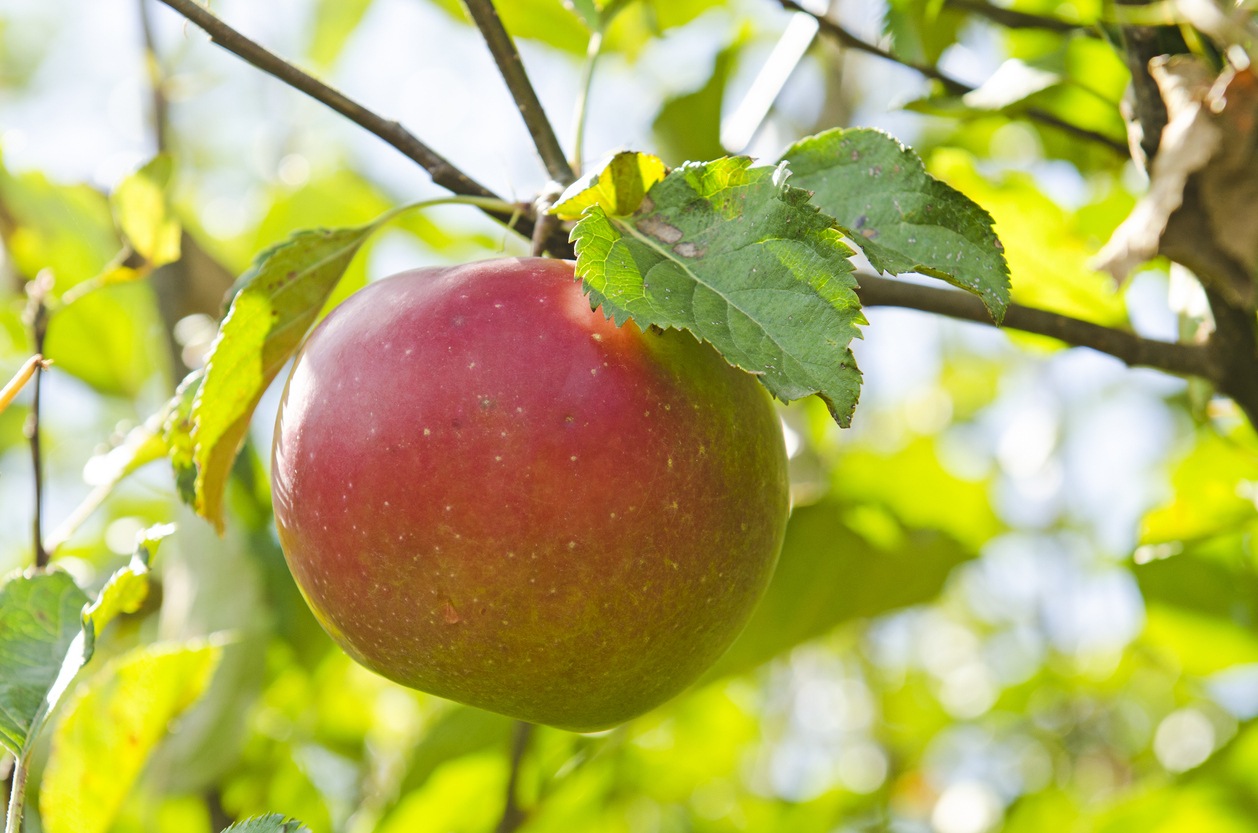Our beloved slice of paradise may be best known for world-class wines, but what about apples? In fact, Sonoma County’s love affair with the Gravenstein apple goes back all the way to when this area first became host to Europeans, and with any luck, it will continue far into the future. The Gravenstein apple is an heirloom apple with a squat, round appearance and green or yellow coloring with red stripes. The flavor is the perfect balance of tart and sweet, making it an ideal apple for cooking while still being delicious raw. It was first planted in the area in 1811 by Russian trappers; over the years, it became one of the staple crops of Sonoma County, particularly during World War II. Literal tons of apples were either dried or cooked to support the massive war efforts, and a subsequently massive apple-processing industry boomed in Sonoma County as a result.
Unfortunately, the Gravenstein is now is in very real danger of being wiped out. This is partially due to the fact that the apples themselves are quite delicate and prone to damage, but the real threat comes from loss of land devoted to apple growing. Orchards that traditionally produced Gravensteins are being steadily bought up and converted into more profitable vineyards or private, rural estates. Over the past 60 years, the areas of land devoted to the commercial production of Gravenstein apples have dwindled from 7,000 acres to just over 900. That’s a loss of over 6,000 acres! Efforts to save the Gravenstein have been going on since the 1980’s, thanks in part to the development of the Slow Food movement, but in spite of this, the Gravenstein is currently listed as an endangered food and is at a real risk of being lost forever.
So, what can you do to help? Luckily, the answer is simple: eat more Gravensteins! Purchasing the apples themselves helps by directly supporting the farmers who grow them – they’re one of the first apples to become ready, so you can find them in stores around Sonoma County starting in late July. You can also purchase products made from Gravensteins which, despite being indirect, is still a great way to support growers. Local brands such as Devoto Gardens craft these flavorful apples into everything from apple sauce to apple cider vinegar to hard cider; even our Oliver’s Own apple products are all made from 100% Gravensteins! Our products are made right here in Sonoma County by Solana Gold – since their inception, they’ve been dedicated to producing the best possible Gravenstein apple products, all while preserving old Gravenstein trees. This year, we’ll be carrying organic Gravensteins from both Devoto and Solana Gold, so you can rest assured that every apple will come with that fresh Gravenstein flavor guaranteed. You can also check out fabulous Gravenstein ciders like Gravitude from Ethic, a locally operated cidery who’ve chosen to make the Gravenstein their star attraction by adding it to just about every cider they produce. In addition to supporting farmers through what you choose to buy, take some time to check out Sebastopol’s Gravenstein Apple Fair Benefit Concert! Though the fair has sadly been canceled this year due to COVID-19, it’s usually a celebration of all things Gravenstein, and guests can learn about the importance of preserving our favorite apple while playing games, eating great food, and enjoying the Sonoma County countryside. This year, make sure you show the Gravenstein some love and attend the Gravenstein Apple Fair Benefit Concert. HERE
Oliver’s is proud to be a part of the Sonoma County community, and we understand how vital it is to preserve our heritage while also looking toward the future. Come in and pick up some locally grown, organic Gravenstein apples or any of our oh-so-tempting Gravenstein apple products, and help us make sure these delicious pieces of history are around for generations to come!
Interested in learning more? Click HERE to learn more about Solana Gold or HERE to check out Devoto Gardens! For more info on efforts to save the Gravenstein, check out Slow Food USA HERE.


No comments yet. Add the first comment